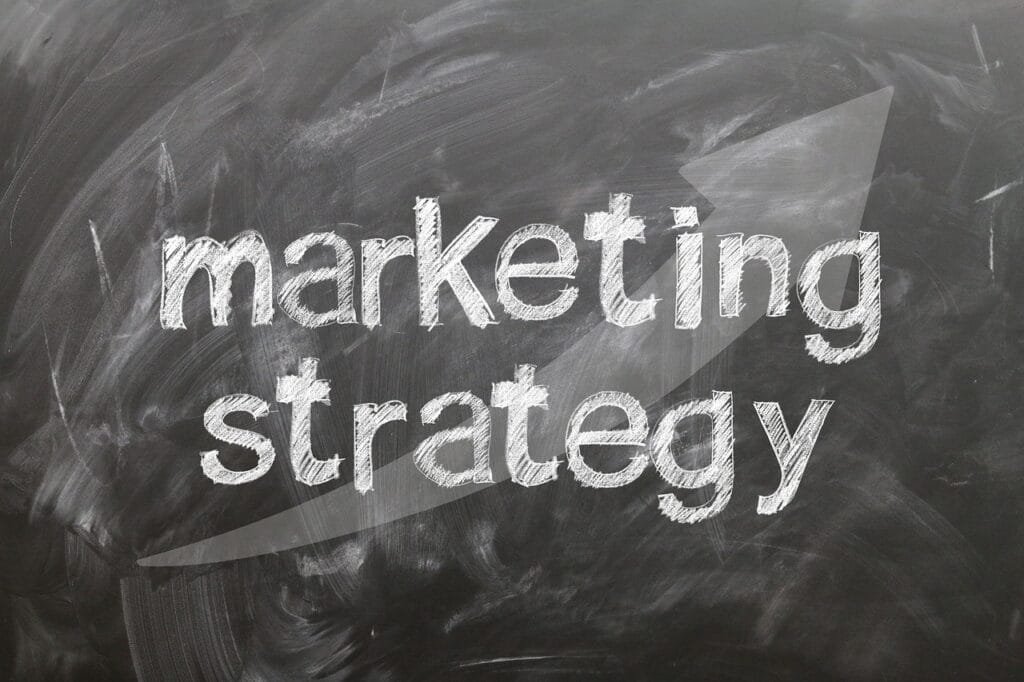This Article has been revised, edited and added to, by Poulomi Chakraborty.
- Understanding the Digital Landscape: Comparison with Traditional Marketing
- Tailoring Your Digital Marketing Strategy: Key Elements for Success
- Implementing and Optimizing Your Digital Marketing Tactics
- Leveraging Data to Refine Your Digital Marketing Strategies
- Integrating AI and Machine Learning in Digital Marketing Strategies
- Exploring Influencer Marketing for Local Businesses
- Harnessing the Power of Video Marketing for Local Businesses
- Conclusion
In today’s digital age, local businesses face a unique set of challenges and opportunities when it comes to marketing. While the digital landscape can seem overwhelming, it offers a powerful platform to connect directly with your local community. This article aims to demystify digital marketing for local businesses and provide actionable strategies to engage your community more effectively. Through a blend of modern techniques and traditional values, we’ll explore how you can harness the power of digital marketing to grow your business and strengthen local connections.
Understanding the Digital Landscape: Comparison with Traditional Marketing

The shift from traditional to digital marketing is more than just a change of tools; it’s a transformation in how businesses communicate with their potential customers. Let’s consider the local bakery that has been serving a small town for decades using traditional marketing methods like newspaper ads, flyers, and word-of-mouth. How does this compare to a modern approach using digital marketing?
Reach and Accessibility
Traditional marketing often limits a business to local newspapers, radio spots, or flyers that can only reach a certain number of people—those who are physically present or actively seeking out that specific type of media. Digital marketing, on the other hand, expands your reach exponentially. With tools like social media, search engine optimization (SEO), and email marketing, your bakery can reach not only the local community more effectively but also attract tourists or new movers who are using digital means to explore their new surroundings.
Cost-Effectiveness
While traditional advertising methods can be costly due to printing and distribution fees, digital marketing offers more control over your budget. Platforms like Facebook and Google Ads allow you to set daily limits and pay per click or impression, making it easier to manage costs and measure the effectiveness of your campaigns. This cost structure also enables smaller businesses to compete on the same stage as larger companies by targeting specific demographics with precision.
Engagement and Interaction
Traditional marketing is typically a one-way communication. You send out your message and hope it resonates with the audience. Digital marketing, by contrast, allows for two-way interaction. Customers can ask questions, leave reviews, and interact directly with your brand through platforms like Twitter, Facebook, and Instagram. This immediate interaction fosters a stronger connection between your business and your customers, creating a sense of community and loyalty.
Measurability and Adaptability
One of the most significant advantages of digital marketing is the ability to track and analyze the performance of your campaigns in real time. With traditional methods, it’s difficult to know how many people engaged with your advertisement or how it influenced their purchasing decisions. Digital tools provide analytics that can show you exactly how many people clicked on your ad, visited your website, or subscribed to your newsletter, allowing for quick adaptations to maximize effectiveness.
Long-Term Relationship Building
Finally, digital marketing excels in building long-term relationships with your customers. Through regular newsletters, personalized offers, and engaging content on social media, you can keep your business at the forefront of your customers’ minds. This ongoing relationship building is less prevalent in traditional marketing, which often focuses on one-off campaigns or seasonal promotions.
In essence, while traditional marketing has its place, digital marketing offers a more dynamic, measurable, and cost-effective way to engage your local community. By understanding these differences and leveraging digital tools, local businesses can enhance their visibility and connection with their audience more than ever before.
Tailoring Your Digital Marketing Strategy: Key Elements for Success

Once you grasp the benefits of digital marketing compared to traditional methods, the next step is crafting a strategy that aligns with your business goals and the unique dynamics of your local community. Let’s explore some key elements that can make your digital marketing efforts more impactful.
Establishing a Strong Online Presence
Building a User-Friendly Website
Your website is often the first point of contact between your business and potential customers. It should reflect your brand’s personality, be easy to navigate, and optimized for mobile devices since a significant portion of users now access the internet through their smartphones. Include essential information like your business hours, location, contact details, and a clear description of your products and services.
Optimizing for Local SEO
Search Engine Optimization (SEO) is crucial for making your business more visible on search engines like Google. For local businesses, local SEO is particularly important. This includes optimizing your website for location-based keywords, ensuring your business is listed in local directories, and setting up a Google My Business account. These steps help ensure that when someone in your area searches for a business like yours, your name appears prominently.
Leveraging Social Media to Connect and Engage
Choosing the Right Platforms
Not all social media platforms will be suitable for your business. Choose platforms where your target audience is most active. For instance, if your bakery specializes in custom cakes, platforms like Instagram and Pinterest might be ideal for showcasing your designs.
Creating Engaging Content
Content is king in digital marketing. Post engaging, relevant content that adds value to your followers—this could be anything from behind-the-scenes videos, customer testimonials, to posts about community events. Engaging content encourages shares and interactions, increasing your visibility.
Running Targeted Ad Campaigns
Social media platforms offer powerful targeting tools that allow you to deliver ads directly to your ideal customer based on demographics, interests, and behaviors. These targeted campaigns can increase your return on investment by focusing on people who are most likely to be interested in your products or services.
Email Marketing: A Personal Touch
Building Your Email List
Start building an email list from day one. Encourage customers to sign up by offering a signup bonus, such as a discount code or free item. Once you have a list, you can start sending out newsletters, promotions, and personalized offers.
Personalization and Segmentation
Email marketing tools allow you to segment your list and send personalized messages based on customer behavior and preferences. This customization makes your emails more relevant to the recipient, increasing the likelihood of engagement and sales.
Engaging with Community Events and Charities
Local Partnerships
Partnering with other local businesses or participating in community events can greatly enhance your visibility and reputation. These partnerships can be promoted through your digital channels, creating content that both supports your community and promotes your business.
Sponsorships and Charitable Contributions
Sponsoring local events or contributing to charities not only helps your community but also boosts your brand’s image. Share your involvement through your digital channels to enhance customer goodwill and attract more business.
By tailoring your digital marketing strategy with these key elements, you can effectively engage with your community and drive more business. Each component offers unique advantages and, when combined, can significantly enhance your digital presence and community engagement.

With the seismic shift that GPT has brought into the digital marketing realm, my focus has been on leveraging its capabilities to bolster local SEO, reputation management, and precision-targeted advertising for small businesses.
One strategy that truly stands out, rooted in my expertise, is the integration of GPT-powered content customization for enhancing local online presence. By using GPT to generate highly localized and niche-specific content, I’ve assisted small businesses in stamping their authority in local searches, which has seen remarkable improvements in their Google My Business rankings and, consequently, organic foot traffic.
A pivotal aspect of ensuring these strategies yield results is the incorporation of GPT into the creation and management of online reviews and reputation. For example, crafting responses to reviews—both positive and negative—using GPT, customized further with a business’s unique voice and customer service philosophy, improves engagement and brand perception significantly.
The positive impact on local SEO and customer trust is measurable, with businesses seeing a 20% increase in customer inquiries and tangible upticks in conversion rates. Lastly, in terms of tracking and optimizing these GPT-augmented strategies, meticulous analysis is key.
I rely on a suite of analytical tools to monitor local search rankings, website traffic, and conversions attributed to GPT-driven initiatives. A/B testing plays a crucial role here—comparing the performance of GPT-generated content versus traditional methods, allowing for real-time adjustments and refinements.
This ongoing optimization process, grounded in concrete data, enables not only the tracking of GPT’s impact but also ensures that its application remains cutting-edge, keeping small businesses well ahead in their local markets.
Steven Morse, Owner of SEMByDesign
Implementing and Optimizing Your Digital Marketing Tactics
With a firm understanding of the different components of a digital marketing strategy, it’s crucial to delve deeper into implementing these tactics effectively. Here, we focus on actionable steps and optimization strategies to ensure your efforts yield the best possible results.
Making the Most of Your Website
Regular Updates and Content Refreshes
Keep your website dynamic by regularly updating it with fresh content, such as blog posts, new product announcements, and customer testimonials. This not only keeps your audience engaged but also improves your SEO rankings as search engines favor websites with updated content.
Analytics and User Feedback
Use tools like Google Analytics to track visitor behavior on your website. This data can provide insights into which pages are most popular, how long visitors stay on your site, and what actions they take before leaving. Additionally, gathering direct feedback from users can help identify areas for improvement.
Advanced Social Media Strategies
Consistent Branding and Voice
Ensure that your social media profiles are consistent with your brand’s voice and aesthetic. This consistency helps strengthen your brand identity and makes your business more recognizable across different platforms.
Interactive Features and Live Sessions
Take advantage of interactive features like polls, live videos, and Q&A sessions to engage directly with your audience. These activities can increase engagement and give your followers a sense of involvement and immediacy with your brand.
Monitoring and Engagement
Regularly monitor your social media for customer comments and questions. Prompt responses to these interactions are crucial for maintaining good customer relationships and building trust within your community.
Email Marketing Enhancements
A/B Testing
Employ A/B testing for your email campaigns by sending two variations of your email to different segments of your audience. This can help determine which elements (like subject lines, call-to-action, or design) work best and should be used in future campaigns.
Automation and Trigger-based Emails
Implement email automation to send trigger-based emails such as welcome emails, birthday discounts, or shopping cart abandonment reminders. This approach ensures timely communication and enhances personalization, increasing the likelihood of conversion.
Community Engagement Beyond Digital
Integrating Online and Offline Marketing
While digital marketing is powerful, integrating it with offline efforts can amplify your reach and impact. For instance, promoting an in-store event online or using QR codes in physical locations that link to exclusive online content.
Feedback Loop
Create a feedback loop where community engagement influences your digital marketing strategies. For example, customer reviews and testimonials gathered at physical events can be used as content for your social media or website.
Measurement and Adaptation
Setting Clear Objectives and KPIs
Set clear, measurable objectives for your digital marketing efforts with specific key performance indicators (KPIs) such as website traffic, conversion rates, or social media engagement levels. This clarity will guide your strategies and help gauge success.
Regular Review and Adaptation
Regularly review the performance of your digital marketing tactics against your KPIs. Be prepared to adapt strategies that aren’t performing well and scale up those that are successful. Continuous learning from successes and failures will keep your strategies fresh and effective.
Implementing these practical tips and strategic insights into your digital marketing efforts can significantly improve your ability to engage with your local community effectively. With a focus on continuous improvement and adaptation, your business can thrive in the ever-evolving digital landscape.

Related: Check out our free SEO suite

Leveraging Data to Refine Your Digital Marketing Strategies
In the realm of digital marketing, data is your most valuable asset. It tells you what’s working, what isn’t, and provides insights into how you can improve. Let’s explore how you can harness the power of data to refine and optimize your digital marketing strategies effectively.
Understanding Data Analytics
Basics of Data Collection
Collecting data is the first step in leveraging it for your marketing needs. This involves setting up tools like Google Analytics on your website, tracking engagements and conversions through your social media platforms, and analyzing email campaign performance through your email service provider’s analytics tools.
Key Metrics to Monitor
The data you need to monitor will depend on your specific marketing goals but generally includes:
- Web Traffic: The number of visitors to your website and their behavior patterns.
- Engagement Rates: How users interact with your content on social media and your website.
- Conversion Rates: The percentage of visitors who complete a desired action, like signing up for a newsletter or making a purchase.
- Customer Acquisition Cost (CAC): The cost of acquiring a new customer through your digital channels.
- Customer Lifetime Value (CLV): The total revenue a business can expect from a single customer account.
Applying Data Insights
Segmenting Your Audience
Use data to segment your audience into different groups based on their behavior and preferences. This allows you to tailor your marketing messages and campaigns to better suit each group, potentially increasing your conversion rates.
Personalization Strategies
Data enables personalization, which is a powerful tool in digital marketing. By understanding customer behaviors and preferences, you can customize your communications and offers to meet the specific needs and interests of your audience, enhancing engagement and loyalty.
Optimizing User Experience (UX)
Analyzing how users interact with your website provides insights into potential friction points or areas for improvement. For example, if data shows that users frequently abandon their shopping cart on a particular page, you might need to simplify the checkout process or offer more payment options.
Predictive Analytics
Forecasting Trends
Predictive analytics uses historical data to forecast future outcomes. This can be particularly useful in anticipating market trends, customer behavior, and potential sales volumes. By preparing for future trends, you can adjust your marketing strategies proactively.
Behavior Modeling
Data can help model customer behaviors and predict how they might react to certain changes in your marketing strategy. This can guide your decision-making process, helping to refine tactics and introduce new initiatives with a higher likelihood of success.
A/B Testing Revisited
Utilizing A/B testing in conjunction with data analytics allows for more precise refinements. By continuously testing different aspects of your marketing materials, you can use real data to determine which elements resonate most with your audience.
Tools and Technologies
Consider investing in advanced marketing analytics tools and platforms that offer deeper insights and automation capabilities. Tools like Salesforce, HubSpot, and Adobe Marketing Cloud provide comprehensive analytics that can automate data collection and analysis, making it easier to scale your marketing efforts effectively.
By effectively leveraging data to refine your digital marketing strategies, you create a more dynamic, responsive marketing plan that can adapt to changes in customer behavior and market conditions. This approach not only improves your marketing efficiency but also enhances the overall customer experience, setting your business apart in a competitive landscape.
Integrating AI and Machine Learning in Digital Marketing Strategies

Artificial Intelligence (AI) and Machine Learning (ML) are transforming digital marketing, offering new ways to enhance efficiency and personalization. These technologies can analyze large data sets faster and more accurately than humans, providing insights that drive more effective marketing decisions. Here’s how local businesses can start integrating these powerful tools into their digital marketing strategies.
Enhancing Personalization with AI
Personalized Customer Experiences
AI excels at personalizing customer interactions. By analyzing past behavior, AI can predict what content or products a user might be interested in and when they are most likely to make a purchase. For instance, AI-driven recommendations are commonly seen on platforms like Amazon, where users are shown products similar to their interests.
Dynamic Content Delivery
AI can also adjust the content displayed on your website or social media dynamically based on who is viewing it. This means that two different visitors might see different banners, product recommendations, or special offers tailored to their unique interests and previous interactions with your brand.
Automating Tasks with Machine Learning
Chatbots for Customer Service
Chatbots are a practical application of AI that many local businesses can easily implement. These AI-driven chatbots can handle a range of customer service tasks, from answering frequently asked questions to helping users navigate your website or initiating returns. This not only improves customer experience by providing instant assistance but also frees up human resources for more complex queries.
Email Marketing Optimization
Machine learning algorithms can optimize your email marketing campaigns by determining the best times to send emails, predicting which users are most likely to open them, and personalizing email content for each subscriber. This can significantly improve open and conversion rates.
Predictive Analytics in Marketing Decisions
Forecasting Sales and Demand
AI and ML can analyze patterns in historical sales data to predict future sales trends. This information can be invaluable for inventory management, marketing budget allocation, and campaign planning, especially during peak seasons or special promotions.
Identifying High-Value Customers
Predictive analytics can also identify which customers are likely to become high-value users based on their behavior. This allows businesses to focus their marketing efforts and resources on nurturing these potentially lucrative relationships.
AI-Driven Advertising
Programmatic Advertising
AI can automate the buying and placement of ads using programmatic advertising. This technology uses real-time data to decide which ads to buy and how much to bid, optimizing advertising efforts to target users most likely to convert at the lowest possible cost.
Ad Performance Optimization
Machine learning can continually analyze the performance of different advertising elements, from images to keywords, and iteratively refine them. This ongoing optimization process ensures that campaigns are always tuned to current best practices and audience preferences.
Getting Started with AI and Machine Learning
Choose the Right Tools
For local businesses, the key is to start small. Many digital marketing platforms now offer AI-powered features, making it easier to integrate these technologies without needing a large budget or deep technical expertise. Tools like HubSpot, Salesforce, and Mailchimp are integrating AI features that are accessible to businesses of all sizes.
Partner with Technology Providers
Consider partnering with tech providers who specialize in AI and ML. They can offer customized solutions tailored to your specific needs and help you navigate the initial integration.
Continuous Learning and Adaptation
As with any technology, the landscape of AI and ML is continually evolving. Keep abreast of new developments and be willing to adapt your strategies as new tools and capabilities become available.
Integrating AI and machine learning into your digital marketing strategies not only enhances operational efficiencies but also offers a significant competitive edge in personalization and customer engagement. As these technologies become more accessible, local businesses that adopt them early will be better positioned to thrive in an increasingly digital marketplace.
Exploring Influencer Marketing for Local Businesses

Influencer marketing has become a potent tool in the digital marketing arsenal, particularly effective for local businesses looking to increase their reach and credibility within the community. Let’s delve into how local businesses can effectively leverage influencer marketing to boost their visibility and connect more authentically with their audience.
Understanding Influencer Marketing
What is Influencer Marketing?
Influencer marketing involves partnering with individuals who have a significant following on social media or other digital platforms and can influence the behavior of their audience. For local businesses, this often means collaborating with local celebrities, thought leaders, or content creators who resonate well with the target demographic.
Why Use Influencer Marketing?
The main advantage of influencer marketing is trust. Followers often trust influencers more than traditional advertisements because influencers are seen as more authentic and relatable. This trust can translate into increased engagement and sales when an influencer genuinely endorses your product or service.
How to Implement Influencer Marketing
Identifying the Right Influencers
Start by identifying influencers who align with your brand’s values and have an audience that overlaps with your target market. For local businesses, it’s crucial to find influencers who are well-regarded in the community and whose local reach is strong. Tools like BuzzSumo or HypeAuditor can help identify these influencers based on topic relevance and engagement metrics.
Building Relationships
Rather than approaching influencer relationships as merely transactional, focus on building genuine partnerships. Engage with influencers’ content, understand their interests and values, and tailor your approach to align with their brand. This not only increases the likelihood of a successful collaboration but also ensures that any promotion feels authentic to their audience.
Crafting Collaborative Content
Work with influencers to create content that feels natural and engaging. This could be anything from a sponsored post on their social media, featuring your products or services, to a guest appearance at your store or an event you’re hosting. The key is that the content should add value to the influencer’s audience while highlighting your brand in a positive light.
Leveraging Influencer Content
Multi-Channel Distribution
Maximize the impact of your influencer collaborations by leveraging the content across multiple channels. Use the content created by influencers not only on your social media but also on your website, in email campaigns, and in online ads. This integrated approach helps reinforce your brand message and increases the content’s reach.
Tracking and Measurement
As with any marketing strategy, tracking the effectiveness of your influencer campaigns is crucial. Use specific tracking links, promo codes, and engagement metrics to measure the performance of influencer partnerships. This data will help you understand what works, what doesn’t, and how you can improve future campaigns.
Ethical Considerations and Best Practices
Transparency and Disclosure
Ensure that all influencer partnerships are transparent, with clear disclosures about the nature of the collaboration. This is not only a legal requirement in many regions but also promotes trust among consumers.
Long-term Engagements
Consider long-term relationships with influencers instead of one-off campaigns. Long-term engagements allow for deeper integration of the influencer with your brand, leading to more authentic endorsements and consistent messaging.
Influencer marketing offers a unique opportunity for local businesses to engage with their community through trusted voices. By choosing the right partners and crafting thoughtful, integrated campaigns, local businesses can significantly enhance their digital marketing effectiveness.
Harnessing the Power of Video Marketing for Local Businesses

Video marketing has emerged as one of the most compelling ways to engage audiences in the digital age. For local businesses, incorporating video into their marketing strategies can enhance visibility, improve engagement, and create a more dynamic connection with the community. Let’s dive into how local businesses can effectively utilize video marketing.
The Impact of Video Marketing
Why Video?
Video content is incredibly effective because it combines visuals, sound, and storytelling, making it highly engaging and memorable. Videos can convey emotions and personality much more significantly than text or images alone, which can help humanize your brand and build stronger connections with your audience.
Benefits for Local Businesses
For local businesses, videos provide an excellent platform to showcase their products, services, and company culture. Videos can also be used to highlight customer testimonials, provide behind-the-scenes looks, and cover local events, making them a versatile tool for enhancing brand presence within the community.
Strategies for Effective Video Marketing
Creating Compelling Content
The key to successful video marketing is creating content that is engaging, informative, and relevant to your audience. Some ideas for local businesses include:
- How-to Videos: Showcasing your products in action or providing useful information related to your industry.
- Customer Testimonials: Featuring satisfied customers sharing their positive experiences.
- Community Involvement: Highlighting your involvement in local events or charity activities.
Optimizing for SEO
Just like other forms of content, videos need to be optimized for search engines to enhance discoverability. This includes using relevant keywords in your video titles, descriptions, and tags. Additionally, hosting your video on platforms like YouTube can further improve your SEO, as Google often features videos in its search results.
Leveraging Live Video
Live video is a powerful tool for real-time engagement. Platforms like Facebook Live and Instagram Live allow businesses to interact directly with their audience, answer questions, and showcase events as they happen. This immediacy can significantly boost engagement and foster a sense of community and transparency.
Distribution and Promotion
Multi-Channel Distribution
To maximize the reach of your video content, distribute it across multiple platforms where your audience is active. This includes your website, social media channels, and email newsletters. Consider also using video in online advertisements to catch the eye of potential customers.
Cross-Promotion with Local Influencers
Collaborating with local influencers to feature or share your video content can dramatically increase its reach and effectiveness. Influencers can help promote your videos to a broader audience that trusts their recommendations.
Measuring Success
Key Metrics to Track
To evaluate the effectiveness of your video marketing efforts, track metrics such as views, engagement rates (likes, comments, shares), watch time, and click-through rates. These metrics will help you understand what types of content resonate with your audience and how videos are contributing to your overall marketing goals.
Feedback and Adaptation
Pay attention to the feedback you receive on your videos, both in terms of analytics and direct viewer comments. Use this information to refine your approach, experimenting with different types of video content, lengths, and formats to see what works best for your audience and business objectives.
By embracing video marketing, local businesses can create more engaging and dynamic promotional content that resonates with their community. Whether through educational content, live interactions, or customer testimonials, videos offer a powerful medium to tell your brand’s story and connect with customers on a more personal level.
Conclusion
In conclusion, digital marketing offers local businesses a multitude of strategies to enhance their visibility and engagement within the community. From understanding the fundamental differences between traditional and digital marketing to harnessing the power of AI and video content, local businesses can tailor their approach to meet the specific needs and preferences of their audience. By effectively leveraging tools like SEO, social media, and email marketing, along with innovative practices such as influencer partnerships and video storytelling, businesses can create a robust online presence.
The key is to remain adaptable, continuously analyze the effectiveness of your strategies through data, and maintain a consistent brand voice across all platforms. As the digital landscape evolves, so too should your marketing strategies, always aiming to provide value, foster relationships, and build a strong community connection. With thoughtful implementation and ongoing refinement, digital marketing can transform how local businesses connect with their customers and thrive in an increasingly competitive environment.
Read Next
- Developing a Content Strategy for Travel SEO
- Best CMS Platforms for SEO-Friendly Travel Websites
- A/B Testing Tools for Conversion Rate Optimization
- Using Google Search Console for Travel Websites
- Google Analytics for Travel and Hospitality: A Guide






















Comments are closed.